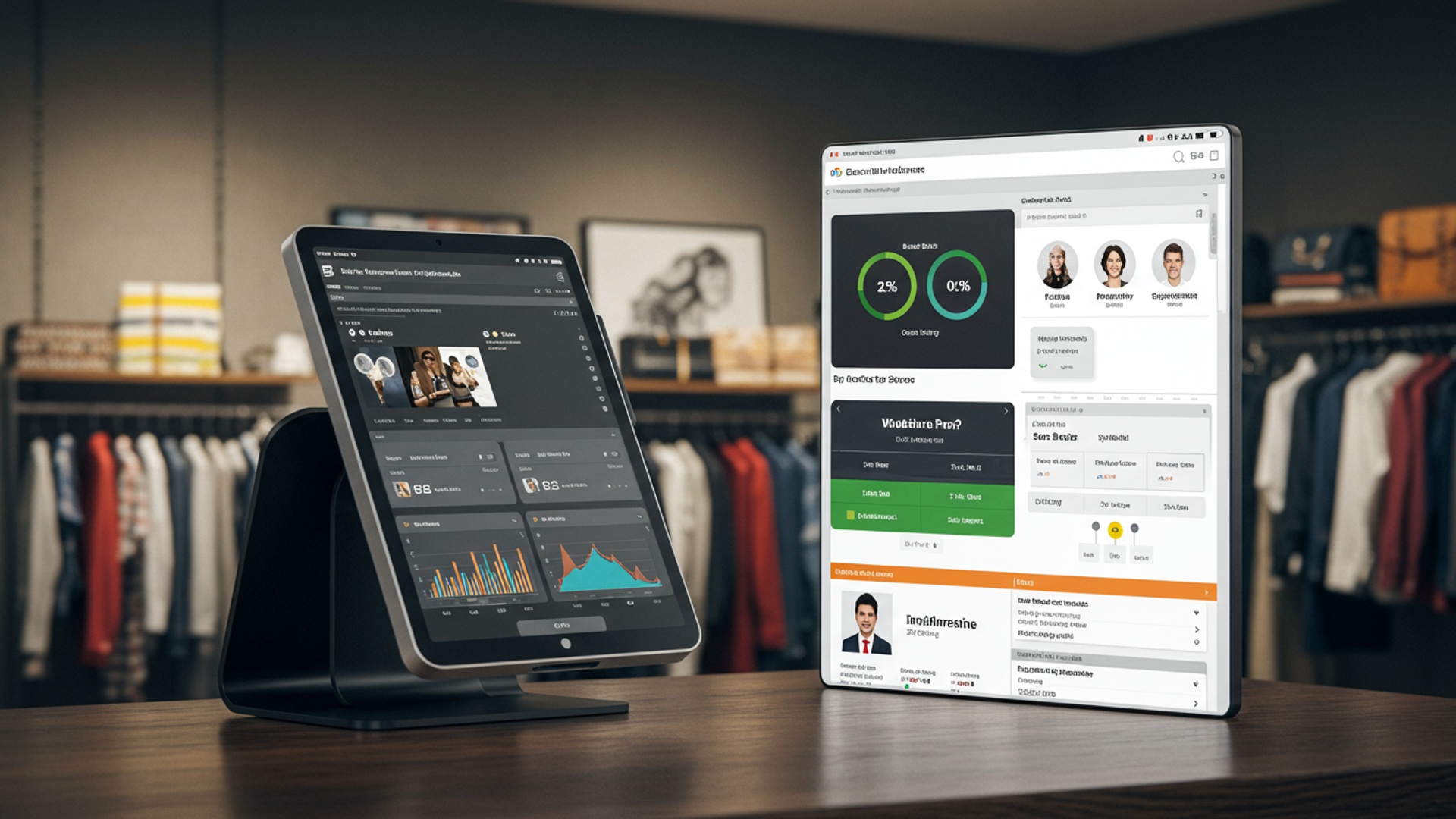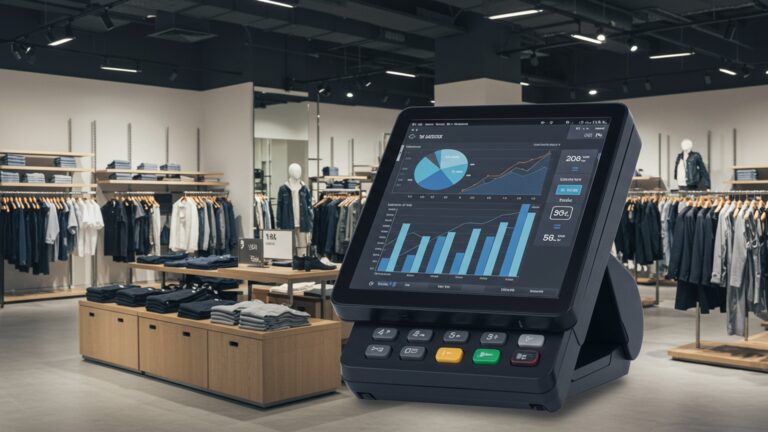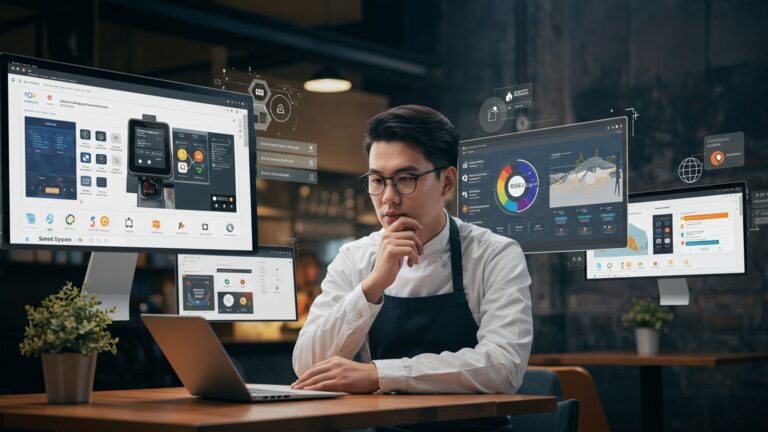7 Essential Features for Clothing Store POS Software in India
The vibrant Indian clothing retail sector, from bustling street markets to high-end boutiques, navigates a complex environment of evolving fashion trends, seasonal demand spikes. increasingly tech-savvy customers. A basic billing system no longer suffices; modern clothing store POS software in India must transcend mere transaction processing to become a strategic asset. Retailers now demand solutions that seamlessly integrate diverse inventory management – think intricate ethnic wear alongside fast fashion – with robust customer loyalty programs and real-time sales analytics, crucial for optimizing stock during festive seasons like Diwali or Eid. Embracing a sophisticated POS system empowers businesses to enhance operational efficiency, manage returns effortlessly. ultimately deliver the personalized shopping experience customers expect in today’s competitive landscape, especially with the surge in digital payments and omnichannel expectations.

Robust Inventory Management with Variant Handling
Beyond basic stock counts, clothing stores deal with incredibly complex inventory: multiple sizes (S, M, L, XL), colors (red, blue, green), styles (slim fit, regular fit). fabric types. An essential clothing store POS software in India must handle these variants effortlessly. It’s about tracking each unique item (SKU – Stock Keeping Unit) down to its specific attributes. This level of detail is crucial for managing a dynamic fashion inventory.
Why is this so essential? Robust inventory management prevents overselling or underselling, significantly reduces manual errors, optimizes stock levels. streamlines reordering processes. Imagine a customer wanting a specific size of a popular dress; the POS should instantly confirm availability across all stores or even online, ensuring a seamless customer experience and preventing lost sales due to inaccurate stock insights.
Consider Ms. Priya, a store manager for a popular ethnic wear brand. She notices a sudden surge in demand for ‘Indigo Blue, Size M’ kurtis. Her clothing store POS software in India, with its advanced inventory module, quickly flags low stock for this specific variant and automatically suggests reorder quantities based on sales velocity and historical data. This proactive approach prevents stockouts of popular items and keeps her shelves stocked with what customers want.
When selecting your software, look for features like matrix inventory for handling variants, automatic low-stock alerts, batch tracking (for receiving new shipments). detailed SKU management capabilities. These functionalities ensure you have a precise, real-time understanding of your stock.
Here’s a simplified example of how a POS might track inventory variants:
| Product Name | SKU | Color | Size | In Stock |
|---|---|---|---|---|
| Men’s Polo Shirt | MPS-BLU-M | Blue | M | 15 |
| Men’s Polo Shirt | MPS-BLU-L | Blue | L | 22 |
| Women’s Dress | WDR-RED-S | Red | S | 8 |
Efficient Sales & Billing with Returns/Exchanges
While efficient sales and billing are the core function of any Point of Sale system, for a clothing store, speed, flexibility. accuracy are paramount. This feature involves quick item scanning, seamless application of discounts and promotions. a streamlined process for handling returns and exchanges. In the Indian retail landscape, where customer service often includes accommodating specific return policies, a flexible and user-friendly system is key.
Its essential nature lies in reducing checkout times, which directly improves customer satisfaction, minimizes billing errors. simplifies what can often be complex transactions like partial returns or exchanges for different items. A slow or cumbersome checkout process can lead to frustration and even lost sales.
Imagine Mr. Sharma, a customer returning a shirt he bought last week. He wants to exchange it for a larger size or a completely different item. The ideal clothing store POS software in India should allow the cashier to quickly process the return, apply the credit from the returned item. complete the new sale—all while accurately updating inventory and sales records in real-time. It should also effortlessly handle scenarios where the new item is priced differently, calculating the balance payable or refundable.
Actionable takeaway: Prioritize POS solutions with features like rapid barcode scanning, intuitive item lookup, support for split payments, robust gift card management, easy application of various discounts and promotions. a highly streamlined return/exchange workflow that includes clear audit trails for every transaction.
Technically, modern POS systems leverage APIs to connect seamlessly with barcode scanners and payment terminals, ensuring that data flows instantly and accurately between devices and the central system.
// Simplified example of a POS transaction flow
function processSale(items, discounts, paymentMethod) { // 1. Scan items, add to virtual cart // 2. Apply any applicable discounts/promotions // 3. Calculate the total amount due // 4. Process payment via selected method // 5. Update inventory levels for sold items // 6. Generate and print/email receipt
}
Integrated Customer Relationship Management (CRM) & Loyalty Programs
Building and nurturing customer loyalty is an absolute necessity for repeat business in India’s highly competitive retail clothing market. A truly effective clothing store POS software in India doesn’t just process transactions; it integrates robust CRM capabilities to capture valuable customer data, track purchase history. manage sophisticated loyalty programs.
This integration is essential because it enables highly personalized marketing efforts, targeted promotions. ultimately, builds stronger, more meaningful relationships with your customers. Knowing a customer’s preferred styles, sizes, brand affinities. past purchases allows your store to offer a genuinely tailored and delightful shopping experience, making them feel valued.
Consider Ms. Rina, a loyal customer who frequently buys ethnic wear from your store. Her profile within the integrated POS and CRM system shows she prefers silk sarees and has a birthday next month. The system can automatically trigger a personalized email offer for a discount on new silk saree collections or a special birthday promotion. This thoughtful gesture not only makes her feel valued but also significantly encourages her next purchase. A well-designed loyalty program might offer points for every rupee spent, redeemable on future purchases, further cementing her loyalty.
When evaluating software, look for features that allow comprehensive capture of customer details (name, phone number, email, birthday, preferences), detailed tracking of purchase history, flexible management of loyalty points, the ability to send automated marketing messages (SMS/Email). tools for segmenting customers for highly targeted campaigns.
Here’s a quick comparison between basic and advanced CRM features within a POS:
| Feature | Basic POS CRM | Advanced POS CRM |
|---|---|---|
| Customer Data Capture | Name, Phone Number | Name, Phone, Email, Birthday, Preferences, Detailed Purchase History |
| Loyalty Programs | Simple point accumulation | Tiered loyalty programs, personalized offers, automated triggers for milestones |
| Marketing Automation | Manual customer outreach | Automated SMS/Email campaigns, customer segmentation for targeted messages |
Comprehensive Reporting & Analytics
In the fast-paced world of fashion retail, data is undeniably power. A sophisticated clothing store POS software in India doesn’t just record transactions; it provides detailed reports and analytics that offer store owners invaluable insights into sales performance, inventory movement, customer behavior. even employee productivity. This data-driven approach is critical for staying ahead in a competitive market.
This feature is essential because it empowers businesses to make informed decisions, identify best-selling items and underperforming stock, optimize staffing schedules, grasp peak sales times. accurately forecast future demand. Without robust reporting, businesses operate in the dark, relying on guesswork rather than concrete evidence, which can lead to missed opportunities and inefficient operations. As Peter Drucker famously said, “What gets measured gets managed.” This holds profoundly true for retail analytics, especially for clothing stores needing to adapt quickly to ever-changing trends.
Consider Mr. Amit, the owner of a chain of trendy boutiques. He regularly uses his POS reports to discover that floral prints sell exceptionally well on weekends, while solid colors are more popular during weekdays. He also notices that one particular sales associate consistently has higher average transaction values and conversion rates. These actionable insights help him adjust inventory allocation between stores, optimize staff scheduling for maximum impact. even influence the design and procurement for future collections. He can also identify which promotions are most effective.
When evaluating solutions, ensure the software offers customizable reports on sales by product, category, employee. time of day. Look for reports on inventory turnover, customer purchase frequency. the effectiveness of various discounts and promotions. A dashboard with real-time data visualization capabilities is a huge plus, allowing for quick, at-a-glance performance monitoring.
Seamless Multi-Store & E-commerce Integration
Many successful clothing businesses in India today operate not just a single physical store. often multiple physical outlets, or they have a significant online presence through an e-commerce platform. An effective clothing store POS software in India should seamlessly integrate these diverse sales channels, providing a unified, real-time view of inventory, sales. customer interactions across the entire business ecosystem.
This integration is absolutely essential because centralized management dramatically reduces operational complexity, prevents frustrating stock discrepancies between online and offline channels. most importantly, allows for a true omnichannel customer experience. Think of scenarios like “buy online, pick up in-store” (BOPIS) or “return in-store, even if bought online” – these are only possible with robust integration.
Consider a customer who browses a beautiful dress online, checks its availability in a nearby physical store using the website’s integrated inventory viewer. then confidently goes to pick it up. The POS system, meticulously integrated with the e-commerce platform, instantly updates the online inventory when the item is reserved or sold in-store, preventing disappointment and ensuring accurate stock levels across all touchpoints. Similarly, a store owner can effortlessly manage inventory for all their physical locations and their online store from a single, centralized dashboard, streamlining operations and improving efficiency.
Actionable takeaway: When choosing your POS, look for native integrations with popular e-commerce platforms (like Shopify, WooCommerce, Magento) and robust features for central inventory management, easy inter-store transfers. consolidated reporting that provides a holistic view across all your sales channels.
Here’s a comparison highlighting the benefits of integrated systems:
| Aspect | Integrated POS & E-commerce | Disconnected Systems |
|---|---|---|
| Inventory Management | Real-time sync across all channels, centralized control | Manual updates, frequent discrepancies, potential overselling/underselling |
| Customer Data | Unified customer profiles, holistic purchase history | Separate customer databases, fragmented view of customer journey |
| Reporting | Consolidated sales, inventory, customer reports across all channels | Fragmented data, time-consuming to get a holistic business overview |
| Customer Experience | Seamless omnichannel experience (BOPIS, returns anywhere) | Inconsistent experience, potential customer frustration |
GST Compliance & Diverse Payment Options
Operating any business in India, especially retail, necessitates strict adherence to Goods and Services Tax (GST) regulations. A robust clothing store POS software in India must therefore be fully GST compliant, capable of accurately generating GST-ready invoices and reports. Moreover, it should support the wide array of payment methods prevalent in India, from traditional cash and credit/debit cards to modern digital options like UPI, mobile wallets (e. g. , Paytm, Google Pay). even increasingly popular “buy now, pay later” (BNPL) schemes.
This feature is absolutely essential for several reasons: it ensures legal compliance, which helps businesses avoid hefty penalties and legal complications; it significantly simplifies the often-complex process of tax filing; and crucially, it caters to diverse customer preferences for payment, thereby improving the overall shopping experience and reducing instances of cart abandonment due to limited payment options.
Consider a customer at a busy clothing store who wants to pay using their preferred UPI app. The ideal POS terminal, integrated with various payment gateways, should allow for a quick QR code scan and instant transaction confirmation, making the payment process smooth and efficient. Simultaneously, the invoice generated by the clothing store POS software in India automatically calculates and displays the correct GST components (CGST, SGST for intra-state sales, or IGST for inter-state sales), ensuring that the business remains fully compliant with tax regulations.
Actionable takeaway: When evaluating POS solutions, verify that the software automatically calculates GST, generates GST-ready invoices (including HSN codes for products), supports various payment gateway integrations (e. g. , Razorpay, PayU). can handle different payment modes seamlessly. It’s also wise to inquire about how the software handles potential future GST changes or updates to ensure long-term compliance.
Here’s a simplified example of how a POS handles GST invoice calculation:
// Example for a clothing item with 12% GST
Product Base Price: INR 1000. 00
Applicable GST Rate: 12% // Calculation for CGST (Central GST) and SGST (State GST) for intra-state sale
CGST (6% of base price): INR 60. 00
SGST (6% of base price): INR 60. 00 Total Payable Amount (including GST): INR 1120. 00 // For inter-state sales, the system would calculate IGST (Integrated GST) at 12%
// IGST (12% of base price): INR 120. 00
// Total Payable Amount: INR 1120. 00
A good clothing store POS software in India will handle these complex calculations automatically, reducing manual errors and saving valuable time.
Employee Management & Security Features
Effectively managing staff and safeguarding sensitive business data are critical pillars for any successful retail operation. A comprehensive clothing store POS software in India extends beyond mere sales processing to include robust features for employee management, allowing owners to control access, track performance. maintain a high level of security across their operations.
This feature is essential because it significantly improves employee accountability, helps in reducing instances of internal theft or fraud, streamlines shift management. most importantly, protects sensitive business and customer data from unauthorized access. In a busy clothing store environment, assigning specific roles and granular permissions prevents unauthorized actions, ensuring that only trusted personnel can perform critical operations.
Consider a scenario where the store owner wants to restrict junior sales associates from applying high-value discounts without explicit manager approval. The clothing store POS software in India, with its advanced user roles and permissions, allows the owner to set precise controls, ensuring that only managers can override discount limits. Also, the system tracks each transaction by the employee who processed it, making it effortless to identify top-performing sales associates for recognition or to investigate any discrepancies or anomalies in sales data.
Actionable takeaway: When choosing your POS, look for features like customizable user roles and permissions, integrated employee time tracking (for clock-in/clock-out), individual sales performance tracking per employee. robust data security measures. These security measures should include data encryption, regular cloud backups. comprehensive audit logs that record every significant system action. Always ensure the software provides a clear audit trail for all transactions and system changes for accountability.
Always prioritize a cloud-based POS solution with strong encryption protocols and automated, regular backups. This approach significantly protects your valuable business data from potential local hardware failures, accidental data loss, or physical security breaches at the store location, offering peace of mind and business continuity.
Conclusion
Ultimately, selecting the right POS for your clothing store in India isn’t merely about ticking off features; it’s a strategic investment in your business’s future. My personal tip is to look beyond basic billing and prioritize systems with truly robust inventory management that can effortlessly handle the complex variations of apparel – think sizes, colours. styles. A good POS, like those leveraging AI for predictive sales analytics, truly shines during peak seasons, helping you anticipate demand for specific trends, be it festive wear or casual chic, ensuring you never miss a sale. As India’s retail landscape rapidly embraces digital payments and omnichannel experiences, ensure your chosen software integrates seamlessly with UPI and supports online sales. This isn’t just a convenience; it’s a necessity for staying competitive in today’s market. So, take the plunge, evaluate carefully. choose a POS partner that empowers you to deliver exceptional customer experiences and drive sustained, profitable growth. Your clothing store deserves a smart, evolving companion for success.
More Articles
How to Choose the Right POS Software for Your Retail Business Guide
How to Select the Best POS Software in India A Comprehensive Guide
7 Essential POS Features to Boost Your Ethnic Wear Store Sales
Learn 10 Powerful POS Strategies for Multi Outlet Clothing Business Growth
How to Choose and Implement Cloud Based POS Software for Your Business
FAQs
What’s the biggest help a POS offers for daily sales at my clothing shop?
A good POS makes billing super fast and easy. It handles different payment methods like cash, cards. UPI, applies discounts quickly. processes returns or exchanges smoothly, so your customers have a great experience.
How does POS software help manage all the different clothes, sizes. colors I stock?
For clothing, inventory management is absolutely key! A solid POS tracks every single item, including its size, color. style variants. This means you always know what’s in stock, what’s selling. what you need to reorder, preventing annoying stockouts or overstocking.
Can a POS help me keep customers coming back?
Absolutely! Many essential POS systems have built-in Customer Relationship Management (CRM) features. You can easily run loyalty programs, track customer purchase history. even send personalized offers. This helps you grasp your customers better and build stronger relationships, encouraging repeat business.
I need to know what’s actually selling and making money. Does POS software help with that?
Yes, big time! A good POS provides detailed reports and analytics. You can see your best-selling items, peak sales hours, staff performance. overall revenue trends. This data is invaluable for making smart business decisions and improving your store’s profitability.
Is this POS software compliant with Indian GST rules?
Definitely. For any business in India, GST compliance is non-negotiable. Essential clothing store POS software is designed to handle GST calculations, generate compliant invoices. produce reports that make filing your taxes much simpler and error-free.
How does a POS speed up the checkout process and reduce errors?
With integrated barcode scanning! Just scan the item. the POS instantly pulls up product details and prices. This dramatically speeds up transactions, minimizes manual entry errors. ensures accurate billing every single time, making your customers happier.
Can I manage my staff and their access using the POS system?
Yes, essential POS software includes robust staff management features. You can set up different user roles, control access permissions for various functions (like discounts or returns). even track individual staff performance. This ensures smooth operations and accountability within your store.





